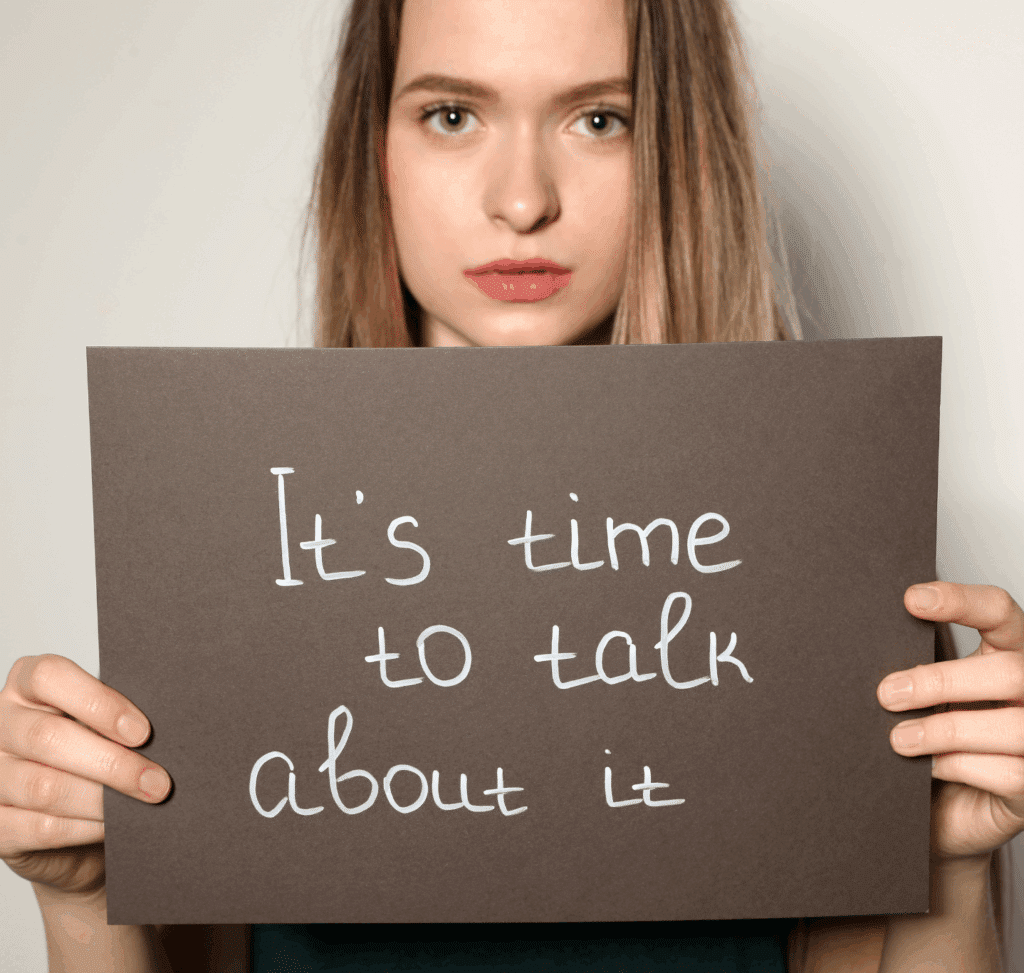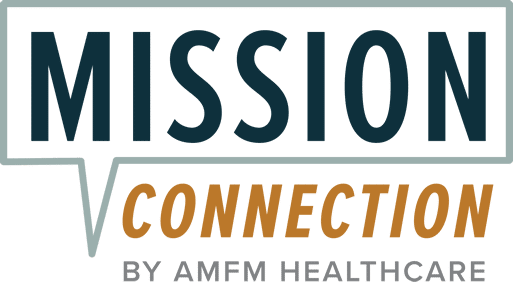Helping Adults in Abusive Relationships

Abusive relationships can be difficult to notice from a distance. Yet, they might be more common than you imagine. Statistics show that, in the U.S., one in four women and one in every nine men will eventually suffer domestic violence at some point in their lives.1 As shocking as these rates are, in many cases, abuse remains undercover, sometimes even for years.
The main reason for this is that violence can have many faces – it isn’t limited to physical harm that might be detected on the victim. In fact, research categorizes several forms of abuse, such as physical, psychological, financial, sexual, and even digital.2-4
If you’re worried and are wondering how to help someone in an abusive relationship, consulting a mental health professional could be a great first step. The information we provide on this page could also give you important insight into recognizing emotional abuse signs and supporting victims of domestic violence.
In the following sections, we will explore:
- The different types of violence in relationships
- The typical signs of each type of interpersonal abuse
- How domestic violence impacts mental health
- How to help someone in an abusive relationship
- Support and therapy options for domestic abuse recovery
- Where you can get professional help for supporting a victim

Understanding Abuse in Relationships
Abuse in relationships, often referred to as “intimate partner violence” (IPV) in literature, is a global and highly common issue across all cultures, age groups, and ethnicities.3 While men are not immune to domestic violence, studies align on the fact that women are more often victims in intimate relationships. According to the World Health Organization, approximately one in three women globally will experience IPV during their lifetime.5
Contrary to outdated beliefs or stereotypes, abuse is not always limited to physical violence, and it doesn’t always leave visible signs. In reality, IPV can involve a range of harmful behaviours that unfold over time and across many forms.
Research highlights several key categories of abuse. These include:
- Physical abuse (such as hitting, choking, or slapping)
- Psychological abuse (like insults, threats, constant criticism, or verbal degradation)
- Sexual abuse (which may include unwanted touching, forced sex, or coercion into sexual activities)
- Financial abuse (where one partner controls money, prevents the other from working, or builds debt in their name)5
Another important but less visible form of abuse is coercive control – a pattern of behaviors like humiliation, surveillance, social isolation, intimidation, and even restricting access to medical care or education.6
Additionally, recent studies have been showing an increase in digital control, which includes monitoring communications, GPS tracking, or threatening to release private material online.4, 7
Each of these forms of abuse can cause significant harm and distress to the victim. In many cases, the effects may become highly dangerous and even life-threatening.8
Recognizing the Signs of Abuse
Abuse in intimate relationships can often remain unnoticed, even by people close to the victim who care deeply. Below are common signs to look for, based on the type of violence that might be happening in the relationship context.
Aside from watching out for physical violence, recognizing emotional abuse signs is also essential. This often includes understanding emotional manipulation; subtle but deeply damaging tactics that slowly but efficiently undermine the victim’s autonomy and confidence.
Physical Abuse:
- Bruises, burns, and other physical marks on the body8
- Trying to cover up injuries by wearing clothing or accessories that conceal them – even if inappropriate for the weather (such as long sleeves, scarves, sunglasses)
- Appearing nervous or tense around the abusive partner
- Attributing injuries to vague “accidents”
Emotional Abuse:
- Appearing withdrawn, anxious, overly apologetic, or indecisive8
- Isolating from family or friends8, 9
- Suddenly losing confidence or motivation
- Showing signs of depression, self-blame, and behavioural withdrawal8
Coercive Control:
- Needing permission to make everyday decisions9
- Cancelling plans unexpectedly
- Being closely monitored by the abusive partner6, 9
Financial Abuse:
- Expressing sudden financial stress or fear about money9
- Losing access to bank accounts or being blocked from working or studying8
Digital Abuse:
- Partner insists on knowing passwords or monitors phone/social media activity10
- Use of location tracking or surveillance apps10
- Threats to share private content without consent 7
How Abuse in Relationships Impacts Mental Health
Violent relationships can cause both immediate and long-term harm to the victim. Any type of mistreatment can profoundly affect mental health. Studies on the impact of physical and emotional abuse in relationships confirm several potential outcomes, including the following:
- Depression: Exposure to intimate partner violence (IPV) is commonly associated with increased rates of depression. Studies found significantly elevated depressive symptoms among survivors, particularly women experiencing chronic or severe abuse.11
- Anxiety disorders: Survivors are also more likely to develop anxiety disorders following IPV, often linked to ongoing fear, intimidation, and unpredictability in abusive environments.11
- Post-Traumatic Stress Disorder (PTSD): Physical and psychological abuse are commonly linked to PTSD symptoms, particularly when the abuse is repeated or prolonged.11, 12
- Complex PTSD: Coercive control and prolonged psychological abuse are associated with complex PTSD symptoms such as emotional dysregulation, dissociation, and numbing.12
- Self-harm and suicidal ideation: Emotional and financial abuse elevate risk of self-harm and suicidal thoughts, especially among younger survivors.11
- Traumatic brain injury (TBI): Physical abuse can cause head trauma and brain injury.11, 13 Research highlights that women exposed to severe IPV may suffer TBIs, with long-term consequences like memory loss, poor concentration, and emotional disturbance.14
These findings highlight the significant aftereffects of IPV on mental health as well as the importance of adequately supporting victims of domestic violence, even if the abusive relationship has ended.
How to Help Someone in an Abusive Relationship
As someone in close proximity to an abuse victim, it’s essential to be equipped with proper insight into what you could do to support them – and how to do it most efficiently. Listening, validation, and practical support are key forms of early emotional abuse intervention, particularly when the affected person is not yet ready to leave the relationship.
- Listen without judgment and validate their experience: Victims share that non-judgmental listening and emotional validation from close contacts make them feel safer and less isolated, and assist in coping with emotional abuse.15
- Offer practical, specific help: Tangible support is perceived as more useful than vague offers. For instance, logistical help was found beneficial in safety plans for abuse survivors. You could consider offering child care, transport, or housing information.
- Ask open, supportive questions: Being asked questions framed around support rather than solutions facilitates autonomy and trust.15 For example, “How can I support you?”
- Avoid pressuring them to leave or confront the abuser: Research shows that confronting the abuser can increase danger, while pressuring a victim to leave may lead to withdrawal.16
- Encourage access to professional support: Referral to trained services is linked with improved outcomes in safety, mental health, and empowerment.15 For example, you could provide numbers for helplines or shelters.
- Use a bystander strategy when safe: Green Dot and Bringing in the Bystander programs show that the Direct, Delegate, Distract model increases safe and effective interventions.17 Strategies include speaking up calmly (direct), asking someone else to help (delegate), or interrupting the moment without confrontation (distract).
- Follow up and check in regularly: Ongoing contact from trusted people is linked to stronger recovery outcomes and increased willingness to seek help.15
Support & Recovery Options for Abuse Victims
As with any mental health struggle, the abuse recovery process can vary from person to person and is often not linear. Even though improvement usually takes time and effort, with the right support, it’s entirely possible for victims to regain a sense of autonomy, self-esteem, trust, and safety. While there are various types of mental health support for abuse victims, the most effective domestic violence recovery strategies are those that are trauma-informed, survivor-led, and adapted to individual needs.
Psychotherapy is a well-researched recovery option, with Trauma-focused cognitive behavioral therapy (TF-CBT) and Eye Movement Desensitization and Reprocessing (EMDR) being the most common in the context of domestic violence. These approaches have been shown to reduce symptoms of PTSD, depression, and anxiety resulting from abuse.18, 19
Furthermore, group therapy and peer support programs can offer survivors a sense of connection and help reduce the isolation and shame that often follow abuse. 20, 21
Beyond abuse recovery therapy, advocacy-based services play a key role in long-term improvement. These include legal support, housing assistance, employment counselling, and case management. Studies have reported that survivors who had access to ongoing advocacy share higher levels of safety, independence, and overall well-being – even years after leaving an abusive relationship.22
Body-based approaches, such as trauma-sensitive yoga, somatic therapy, or mindfulness practices, are also used alongside other therapy options for domestic abuse recovery. Potential benefits are grounded in rebuilding the survivor’s connection with the body, which is often disrupted during chronic abuse.23
Finally, long-term social support from trusted friends, family members, or community organizations remains essential. When survivors are believed, supported, and empowered, recovery is shown to be more sustainable and meaningful.24
Mission Connection: Helping You Support Someone in an Abusive Relationship
Supporting victims of domestic violence can feel overwhelming and emotionally complex. It can be confusing and challenging; therefore, it’s essential to have access to adequate guidance and tools.
At Mission Connection, we offer therapy and resources for people concerned about someone they care about. Maybe you need help pinpointing the signs of abuse or initiating difficult conversations. Or perhaps you’re wondering how to help someone escape an abusive relationship or build safety plans for abuse survivors.
Whatever your concerns, our team is here to support you. We work with you to understand the situation, manage your own stress and boundaries, and offer well-informed help. If you’re ready to talk or just want to learn more, reach out to our team anytime.

References
- Huecker, M. R., King, K. C., Jordan, G. A., & Smock, W. (2021). Domestic violence. In StatPearls. StatPearls Publishing. Retrieved July 17, 2025, from
https://www.ncbi.nlm.nih.gov/books/NBK499891/ - Centers for Disease Control and Prevention. (2016). Intimate partner violence: Definitions.
http://www.cdc.gov/violenceprevention/intimatepartnerviolence/definitions.html - Stylianou, A. M. (2018). Economic abuse within intimate partner violence: A review of the literature. Violence and Victims, 33(1), 3–22.
https://doi.org/10.1891/0886-6708.33.1.3 - Stephenson, P., & Woodlock, D. (2021). Technology-facilitated coercive control: Domestic violence and the use of technology. Women’s Studies International Forum, 84, 102433.
https://doi.org/10.1016/j.wsif.2020.102433 - World Health Organization. (2021). Violence against women prevalence estimates, 2018. World Health Organization.
https://www.who.int/publications/i/item/9789240022256 - Stark, E. (2007). Coercive control: How men entrap women in personal life. Oxford University Press.
- Data & Society Research Institute. (2016). Online harassment, digital abuse, and cyberstalking in America.
https://datasociety.net/ - Coker, A. L., Davis, K. E., Arias, I., Desai, S., Sanderson, M., Brandt, H. M., & Smith, P. H. (2002). Physical and mental health effects of intimate partner violence for men and women. American Journal of Preventive Medicine, 23(4), 260–268.
https://doi.org/10.1016/S0749-3797(02)00514-7 - Johnson, M. P. (2008). A typology of domestic violence: Intimate terrorism, violent resistance, and situational couple violence. University Press of New England.
- Henry, N., Powell, A., & Flynn, A. (2023). Technology-facilitated abuse: Family, domestic and sexual violence – literature scan. eSafety Commissioner. https://www.esafety.gov.au/sites/default/files/2023-02/Technology-facilitated-abuse-literature-scan.pdf
- National Academies of Sciences, Engineering, and Medicine. (2023). Reducing the impact of intimate partner violence and its consequences on health and well-being. National Academies Press.
https://www.ncbi.nlm.nih.gov/books/NBK605462/ - Fernández-Fillol, C., Pitsiakou, C., Perez-Garcia, M., Teva, I., & Hidalgo-Ruzzante, N. (2021). Complex PTSD in survivors of intimate partner violence: Risk factors related to symptoms and diagnoses. European Journal of Psychotraumatology, 12(1), 1971927.
https://doi.org/10.1080/20008198.2021.1971927 - Wilson, S. R. (2009). Traumatic brain injury and intimate partner violence. In C. Mitchell (Ed.), Intimate partner violence: A health-based perspective (pp. 187–204). Oxford University Press.
- Pennsylvania Department of Health. (2012). Traumatic brain injury trainer’s guide: For professionals working with survivors of domestic violence.
https://www.pa.gov/content/dam/copapwp-pagov/en/health/documents/topics/documents/programs/tbi/TrainersGuideTBI2012.pdf - Heron, R. L., Eisma, M. C., & Browne, K. D. (2021). Barriers and facilitators of disclosing domestic violence to the healthcare service: A systematic review of qualitative research. Health & Social Care in the Community, 29(3), 612–630.
https://doi.org/10.1111/hsc.13282 - Wilcox, P. (2006). Surviving domestic violence: Gender, poverty and agency. Palgrave Macmillan.
- Cook-Craig, P. G., Cummings, C., Perrin, N. A., Gillespie, C. K., & Sniffen, C. (2014). From empowering victims to engaging bystanders: Examining the effectiveness of a community-based bystander intervention program. Journal of Primary Prevention, 35(1), 5–18.
https://doi.org/10.1007/s10935-013-0338-0 - Herman, J. L. (2015). Trauma and recovery: The aftermath of violence—from domestic abuse to political terror. Basic Books.
- Shapiro, F., & Maxfield, L. (2019). EMDR therapy: An overview of current and future research. European Review of Applied Psychology, 69(4), 173–181.
https://doi.org/10.1016/j.erap.2019.05.001 - Tutty, L. M., Babins-Wagner, R., Rothery, M. A., & Bidgood, B. A. (2006). Residents’ views of the efficacy of shelter services for abused women. Canadian Journal of Community Mental Health, 25(1), 91–105.
https://doi.org/10.7870/cjcmh-2006-0010 - Osborn, M., Ball, T. J., & Rajah, V. (2024). Peer support work in the context of intimate partner violence: A scoping review. Trauma, Violence, & Abuse. Advance online publication.
https://doi.org/10.1177/15248380241271350 - Sullivan, C. M., & Bybee, D. I. (1999). Reducing violence using community-based advocacy for women with abusive partners: A randomized trial. American Journal of Community Psychology, 27(5), 699–716.
https://doi.org/10.1023/A:1022852703837 - van der Kolk, B. A. (2014). The body keeps the score: Brain, mind, and body in the healing of trauma. Viking.
- Fournier, B., Price, C., & Sullivan, C. M. (2022). Understanding the long-term impact of advocacy services for domestic violence survivors. Journal of Family Violence, 37(3), 451–462.
https://doi.org/10.1007/s10896-021-00318-0
